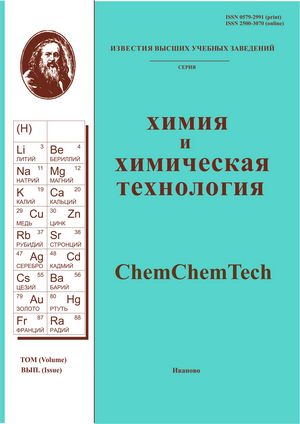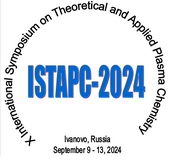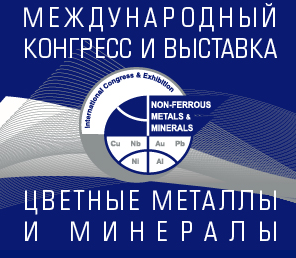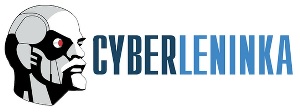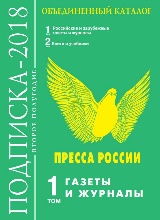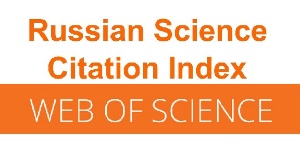НЕЭМПИРИЧЕСКОЕ МОДЕЛИРОВАНИЕ ИНФРАКРАСНОГО СПЕКТРА МОЛЕКУЛЫ ТРИФТОРИДА ЦЕРИЯ С ВЫХОДОМ ЗА ПРЕДЕЛЫ ПРИБЛИЖЕНИЯ БОРНА–ОППЕНГЕЙМЕРА
Аннотация
Выполнен теоретико-групповой анализ и разработаны приемы построения модельного спин-вибронного гамильтониана и диабатического представления оператора электрического дипольного момента молекулы тригалогенида церия CeX3. Модель учитывает вибронное смешивание семи низколежащих электронных состояний 4f1 всеми колебательными модами молекулы, (A2'' + E' + E'' + A1' + A2') × (a1' + a2'' + e' + e'), а также спин-орбитальное взаимодействие. Многоисходным методом конфигурационного взаимодействия MRCISD+Q, учитывающим одно- и двукратные возбуждения с поправкой на квартичные возбуждения, вычислены многомерные поверхности потенциальной энергии и, методом MRCISD, матричных элементов дипольного момента молекулы CeF3. Гибридным способом с применением техники квазидиабатизации определены коэффициенты в разложениях матричных элементов модельного гамильтониана по степеням нормальных координат Qi вплоть до четвертого порядка для валентных координат, Q1(a1'), Q3(e'), и деформационной координаты Q4(e'), и восьмого порядка для координаты неплоского изгиба Q2(a2''). Параметры спин-орбитального взаимодействия нулевого порядка определены по матричным элементам оператора Брейта–Паули в базисе состояний, полученных методом MRCISD. Выполнены вариационные расчеты волновых чисел и интенсивностей полос в ИК спектре поглощения молекулы CeF3. Оказалось, что вследствие вибронного взаимодействия (эффекты и псевдоэффекты Яна–Теллера) и спин-орбитального взаимодействия спектр обладает сложной структурой, происхождение которой невозможно объяснить в рамках стандартного приближения Борна–Оппенгеймера. Найдено, что наиболее интенсивное поглощение в высокочастотной области спектра (около 500 см–1), преимущественно связанное с координатой растяжения связей Q3, расщеплено на две полосы, отстоящие друг от друга на 3 см−1. Этот результат находится в полном согласии с данными ИК спектроскопии матрично-изолированных молекул CeF3. В целом результаты проведенных расчетов однозначно свидетельствуют о вибронном, а не колебательном происхождении спектральных полос, включая полосы в низкочастотной области спектра, и таким образом показывают ошибочность общепринятого отнесения наблюдаемых на опыте полос к фундаментальным колебательным переходам молекулы, сделанного на основе предположения о допустимости применения к этой молекуле приближения Борна–Оппенгеймера. Предложено новое отнесение наблюдаемого ИК спектра молекулы CeF3.
Для цитирования:
Васильев О.А., Соломоник В.Г. Неэмпирическое моделирование инфракрасного спектра молекулы трифторида церия с выходом за пределы приближения Борна–Оппенгеймера.Изв. вузов. Химия и хим. технология. 2018. Т. 61. Вып. 3. С. 31-44
Литература
Hargittai M. Molecular structure of metal halides. Chem. Rev. 2000. V. 100. N 6. P. 2233–2302. DOI: 10.1021/cr970115u.
Kovács A., Konings R.J.M. Structure and vibrations of lanthanide trihalides: an assessment of experimental and theoretical data. J. Phys. Chem. Ref. Data. 2004. V. 33. N 1. P. 377–404. DOI: 10.1063/1.1595651.
Tsuchiya T., Taketsugu T., Nakano H., Hirao K. Theoretical study of electronic and geometric structures of a series of lantha-nide trihalides LnX3 (Ln=La–Lu; X=Cl, F). J. Mol. Struct. THEOCHEM. 1999. V. 461–462. P. 203–222. DOI: 10.1016/S0166-1280(98)00461-8.
Lanza G., Varga Z., Kolonits M., Hargittai M. On the effect of 4f electrons on the structural characteristics of lanthanide trihal-ides: computational and electron diffraction study of dysprosium trichloride. J. Chem. Phys. 2008. V. 128. N 7.
P. 074301. DOI: 10.1063/1.2828537.
Groen C.P., Varga Z., Kolonits M., Peterson K.A., Hargittai M. Does the 4f electron configuration affect molecular geome-tries? A joint computational, vibrational spectroscopic, and electron diffraction study of dysprosium tribromide. Inorg. Chem. 2009. V. 48. N 9. P. 4143–4153. DOI: 10.1021/ic802340g.
Tsukamoto S., Hirotoshi M., Hiroshi T., Eisaku M. CASSCF and CASPT2 calculations for lanthanide trihalides LnX3 using model core potentials. Chem. Phys. Lett. 2009. V. 474. N 1–3. P. 28–32. DOI: 10.1016/j.cplett.2009.04.018.
Varga Z., Groen C.P., Kolonits M., Hargittai M. Curious matrix effects: a computational, electron diffraction, and vibrational spectroscopic study of dysprosium triiodide. Dalton Trans. 2010. V. 39. N 27. P. 6221–6230. DOI: 10.1039/C001182G.
Shlykov S.A., Giricheva N.I., Lapykina E.A., Girichev G.V., Oberhammer H. The molecular structure of TbI3, DyI3, HoI3 and ErI3 as determined by synchronous gas-phase electron diffraction and mass spectrometric experiment assisted by quantum chemi-cal calculations. J. Mol. Struct. 2010. V. 978. N 1–3. P. 170–177. DOI: 10.1016/j.molstruc.2010.02.056.
Giricheva N.I., Shlykov S.A., Lapykina E.A., Oberhammer H., Girichev G.V. The molecular structure of PrI3 and GdI3 as determined by synchronous gas-phase electron diffraction and mass spectrometric experiment assisted by quantum chemical calcu-lations. Struct. Chem. 2011. V. 22. N 2. P. 385–392. DOI: 10.1007/s11224-010-9709-4.
Xu W., Ji W.-X., Qiu Y.-X., Schwarz W.H.E., Wang S.-G. On structure and bonding of lanthanoid trifluorides LnF3 (Ln = La to Lu). Phys. Chem. Chem. Phys. 2013. V. 15. N 20. P. 7839–7847. DOI: 10.1039/c3cp50717c.
Solomonik V.G. Potential energy surfaces of low-lying nearly degenerate spin-orbit states of cerium trihalide molecules. Twentieth Austin Symposium on Molecular Structure (March 7–9, 2004). Book of Аbstracts. U.S.A.: The University of Texas at Austin. P. 46.
Solomonik V.G., Smirnov A.N., Vasiliev O.A., Starostin E.V., Navarkin I.S. Non-empirical study on the electronic structure of cerium, praseodymium, and ytterbium trihalide molecules. Izv. Vyssh. Uchebn. Zaved. Khim. Khim. Tekhnol. 2014. V. 57. N 12. P. 26–27. (in Russian).
Barckholtz T., Miller T. Quantitative insights about molecules exhibiting Jahn–Teller and related effects. Int. Rev. Phys. Chem. 1998. V. 17. N 4. P. 235–524. DOI: 10.1080/014423598230036.
Domcke W., Yarkony D.R., Köppel H. Conical intersections: electronic structure, dynamics and spectroscopy. Advanced series in physical chemistry. V. 15. Singapore: World Scientific. 2004. 838 p. DOI: 10.1142/9789812565464_fmatter.
Bersuker I.B. The Jahn–Teller effect. Cambridge: Cambridge University Press. 2006. 616 p. DOI: 10.1017/CBO9780511524769.
Köppel H., Yarkony D.R., Barentzen H. The Jahn–Teller Effect: Fundamentals and Implications for Physics and Chemistry. Springer Series in Chemical Physics. Heidelberg: Springer. 2009. V. 97. 912 p. DOI: 10.1007/978-3-642-03432-9.
Domcke W., Yarkony D.R., Köppel H. Conical Intersections: Theory, Computation and Experiment. Advanced series in physical chemistry. V. 17. Singapore: World Scientific. 2011. 754 p. DOI: 10.1142/9789814313452_fmatter.
Haller E., Köppel H., Cederbaum L.S., Niessen W., Bieri G. Multimode Jahn–Teller and pseudo-Jahn–Teller effects in BF3+ J. Chem. Phys. 1983. V. 78 N 3. P. 1359. DOI: 10.1063/1.444875.
Woywod C., Scharfe S., Krawczyk R., Domcke W., Köppel H. Theoretical investigation of Jahn–Teller and pseudo-Jahn–Teller interactions in the ammonia cation. J. Chem. Phys. 2003. V. 118. N 13. P. 5880. DOI: 10.1063/1.1557191.
Mayer M., Cederbaum L.S., Köppel H. Ground state dynamics of NO3: Multimode vibronic borrowing including thermal ef-fects. J. Chem. Phys. 1994. V. 100. N 2. P. 899. DOI: 10.1063/1.466572.
Stanton J.F. On the vibronic level structure in the NO3 radical. I. The ground electronic state. J. Chem. Phys. 2007.
V. 126. N 13. P. 134309. DOI: 10.1063/1.2715547.
Nagesh J., Sibert E.L. Infrared spectra at a conical intersection: vibrations of methoxy. J. Phys. Chem. A. 2012. V. 116. N 15. P. 3846–55. DOI: 10.1021/jp2116627.
Mondal P., Opalka D., Poluyanov L.V., Domcke W. Ab initio study of dynamical E×e Jahn–Teller and spin-orbit coupling ef-fects in the transition-metal trifluorides TiF3, CrF3, and NiF3. J. Chem. Phys. 2012. V. 136. N 8. P. 084308. DOI: 10.1063/1.3687001.
Domcke W., Mishra S., Poluyanov L.V. The relativistic E×E Jahn–Teller effect revisited. Chem. Phys. 2006. V. 322. N 3. P. 405–410. DOI: 10.1016/j.chemphys.2005.09.009.
Poluyanov L.V., Domcke W. The 3E × E,4E × E and 5E × E Jahn–Teller Hamiltonians of trigonal systems. Chem. Phys. 2008. V. 352. N 1–3. P. 125–134. DOI: 10.1016/j.chemphys.2008.05.020.
Poluyanov L.V., Domcke W. Conical intersections: theory, computation and experiment. Advanced series in physical chemistry. V. 17. W. Domcke, D. R. Yarkony, H. Köppel. Singapore: World Scientific. 2011. Chap. Spin-orbit vibronic coupling in Jahn–Teller systems. P. 754. DOI: 10.1142/9789814313452_0004.
Mondal P., Opalka D., Poluyanov L.V., Domcke W. Jahn–Teller and spin-orbit coupling effects in transition-metal triluorides. Chem. Phys. 2011. V. 387. N 1–3. P. 56–65. DOI: 10.1016/j.chemphys.2011.06.034.
Born M., Kun H. Dynamical theory of crystal lattices. New York and London: Oxford University Press. 1954. 420 p.
Hegelund F., Rasmussen F., Brodersen S. The selection rules and the transition moment for rotation‐vibrational transitions in axial molecules. J. Raman Spectrosc. 1973. V. 1. N 5. P. 433–453. DOI: 10.1002/jrs.1250010503.
Sekya M., Noro T., Koga T., Shimazaki T. Relativistic segmented contraction basis sets with core-valence correlation effects for atoms 57La through 71Lu: Sapporo-DK-nZP sets (n = D, T, Q). Theor. Chem. Acc. 2012. V. 131. N 7. P. 1247. DOI: 10.1007/s00214-012-1247-2.
Dunning T.H. Jr. Gaussian basis sets for use in correlated molecular calculations. I. The atoms boron through neon and hydrogen. J. Chem. Phys. 1989. V. 90. N 2. P. 1007–1023. DOI: 10.1063/1.456153.
Kendall R.A., Dunning T.H. Jr., Harrison R.J. Electron affinities of the first-row atoms revisited. Systematic basis sets and wave functions. J. Chem. Phys. 1992. V. 96. N 9. P. 6796–6806. DOI: 10.1063/1.462569.
MOLPRO, version 2015.1, a package of ab initio programs. Werner H.J., Knowles P.J., Lindh R. et al. URL: http://www.molpro.net.
Wilson E.B. Jr., Decius J.C., Cross P.C. Molecular vibrations: the theory of infrared and Raman vibrational spectra. Dover Pub-lications. 1980. 416 p.
Solomonik V.G., Smirnov A.N., Vasiliev O.A. The LaF3 non-rigid molecular structure and its effect on the lanthanum trifluoride vibrational spectrum and thermodynamic properties. Izv. Vyssh. Uchebn. Zaved. Khim. Khim. Tekhnol. 2011. V. 54. N 2. P. 38–48. (in Russian).
Simah D., Hartke B., Werner H.-J. Photodissociation dynamics of H2S on new coupled ab initio potential energy surfaces. J. Chem. Phys. 1999. V. 111. N 10. P. 4523. DOI: 10.1063/1.479214.
Lanczos C. An iteration method for the solution of the eigenvalue problem of linear differential and integral operators.
J. Res. Natl Bur. Std. 1950. V. 45. P. 255–282.
Wu K., Simon H. Thick-restart Lanczos method for large symmetric eigenvalue problems. SIAM J. Matrix Anal. Appl. 2000. V. 22. N 2. P. 602–616. DOI: 10.1137/S0895479898334605.
Bunker P. R., Jensen P. Molecular Symmetry and Spectroscopy. NRC Research Press. 2006. 748 p.
Hastie J.W., Hauge R.H., Margrave J.L. Geometries and entropies of metal trifluorides from infrared spectra: ScF3, YF3, LaF3, CeF3, NdF3, EuF3, and GdF3. J. Less-Common Met. 1975. V. 39. N 2. P. 309–334. DOI: 10.1016/0022-5088(75)90205-2.
Wesley R.D., DeKock C.W. Geometry and infrared spectra of matrix isolated rare-earth halides. I. LaF3, CeF3, PrF3, NdF3, SmF3, and EuF3. J. Chem. Phys. 1971. V. 55. N 8. P. 3866–3877. DOI: 10.1063/1.1676673.

